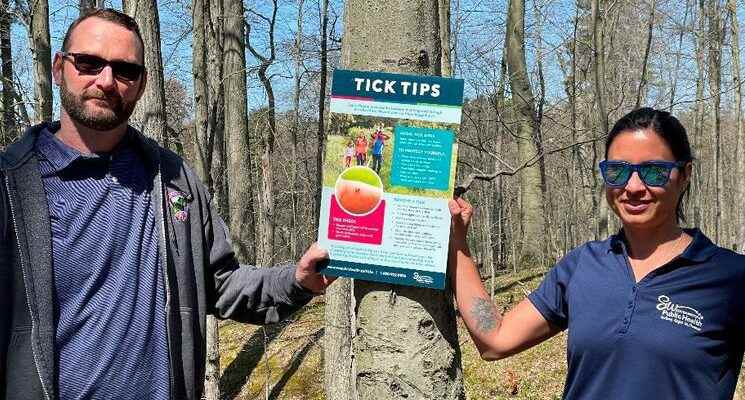Officials with the public health agency for Oxford and Elgin counties are urgent residents to familiarize themselves with the risks of ticks and Lyme disease before heading outdoors this spring.
This public education effort coincides with the recent release of Public Health Ontario’s Lyme disease risk map for 2022, which now identifies Malahide Township in Elgin County as a risk area.
Lyme disease is caused by a bacteria that spreads through the bite of an infected backlogged tick. Risk areas are locations where these infected ticks have been found or where people may come in contact with them. While the possibility is low, there is a chance of finding these ticks almost anywhere in the province, Southwestern public health officials said.
“We are starting to see warmer days and, with that, comes hiking and camping season. We encourage everyone to enjoy the outdoors safely this summer by reviewing tick-prevention tips,” said Jessica Fiddy, a public health inspector, said in the release.
Public health officials offered a few prevention tips for Southwestern Ontario hikers and campers, suggesting the use of a bug spray with DEET, wearing pants and long-sleeved shirts and wearing closed-toe shoes. When in a risk area, officials recommended carefully checking for ticks while warning that the insects “can be very tiny.”
Ticks that have been carefully removed from a person’s body can be brought to Southwestern public health for identification. Knowing the type of tick can help determine a person’s risk of contracting Lyme disease.
Often identified by an expanding red rash that appears at the bite site within a week of infection, Lyme disease can be a serious disease if left untreated. The most common symptoms include fever, headache, fatigue and the rash. If not treated by rounds of antibiotics, the untreated infection can spread to joints, the heart and the nervous system.
